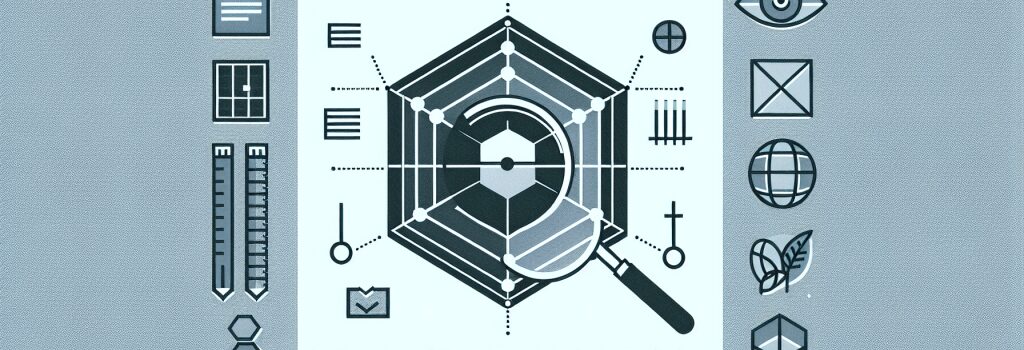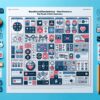Важливість вирівнювання в веб-дизайні для зручного читання користувачами.

Розуміння Ролі Вирівнювання в Веб-Дизайні
Вирівнювання є важливим елементом веб-дизайну, який значно впливає на читабельність користувачів і загальну веб-доступність сайту. Правильне вирівнювання не лише надає порядок та послідовність веб-контенту, але також підвищує користувацький досвід, роблячи інформацію легкою у сприйнятті та візуально привабливою. Ця стаття досліджує важливість вирівнювання в веб-дизайні, досліджуючи, як воно впливає на читабельність користувачів та надає поради для ефективної реалізації принципів вирівнювання.
Чому Вирівнювання Має Значення в Веб-Дизайні
– Підвищує Читабельність: Правильне вирівнювання допомагає створити чистий, організований макет, який плавно направляє очі користувача через контент. Коли елементи вирівнюються, це зменшує візуальний хаос і робить його легшим для користувачів зрозуміти структуру та ієрархію інформації.
– Створює Баланс: Стратегічне вирівнювання сприяє збалансованому веб-макету, який відчувається стабільним і цільним. Цей баланс є важливим для підтримання залучення користувачів та запобігання візуальному втомленню.
– Підтримує Візуальну Ієрархію: Вирівнювання допомагає встановити чітку візуальну ієрархію, виділяючи найважливішу інформацію. Воно направляє увагу користувача туди, де це найбільше потрібно, підвищуючи ефективність комунікації.
– Підвищує Професіоналізм та Довіру: Сайти зі сталим вирівнюванням сприймаються як більш професійні та надійні. Увага до деталей в вирівнюванні елементів відображає зобов’язання бренду до якості та точності.
Ключові Стратегії для Реалізації Вирівнювання в Веб-Дизайні
<h4>Стійке Вирівнювання
Стійкість є ключем при вирівнюванні елементів на всьому вашому веб-сайті. Оберіть шаблон вирівнювання (ліве, праве, по центру або по ширині), який найкраще підходить для вашого контенту, і тримайтеся його на всіх сторінках. Стійке вирівнювання не лише виглядає професійно, але також підсилює передбачуваність, роблячи користувачам легше навігацію вашим контентом.
<h4>Використання Сіток для СтруктуриВключення системи сіток у ваш веб-дизайн може значно підвищити вирівнювання. Сітки надають рамку, яка спрощує розташування та вирівнювання елементів, забезпечуючи збалансований і гармонійний макет. Вони є інструментальними у створенні реагуючих дизайнів, які зберігають вирівнювання на різних розмірах екранів.
<h4>Звертайте Увагу на Вирівнювання ТекстуВирівнювання тексту відіграє ключову роль у читабельності. Текст, вирівняний ліворуч, зазвичай найзручніший для читання, оскільки створює сталу точку початку для кожного рядка. Однак центрований або вирівняний праворуч текст може бути використаний для заголовків або конкретних дизайнерських елементів, якщо вони відповідають загальному дизайну та читабельності.
<h4>Вирівнюйте Елементи Візуально, Не МатематичноПри вирівнюванні елементів, пріоритизуйте візуальне вирівнювання над математичною точністю. Завдяки варіаціям у формі, розмірі та кольорі, елементи, які математично вирівнюються, можуть не виглядати візуально вирівняними. Можливі коригування для досягнення візуально збалансованого композиції можуть бути необхідні.
Висновок
Вирівнювання – це не лише простий естетичний вибір; це фундаментальний принцип, який значно впливає на зручність та ефективність веб-сайту. Реалізуючи обдумані техніки вирівнювання, дизайнери можуть створювати візуально привабливі, легко навіговані та зручні для користувачів веб-сайти. Приймаючи вищезазначені стратегії, веб-розробники та дизайнери можуть використовувати вирівнювання для підвищення читабельності, підвищення користувацького досвіду та, в кінцевому підсумку, забезпечити успіх своїх веб-проектів.


